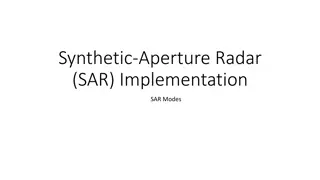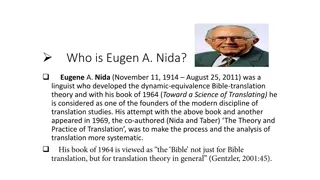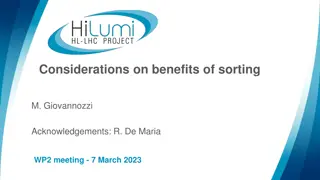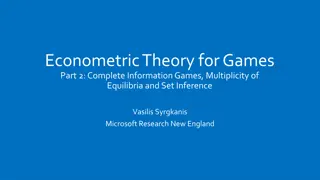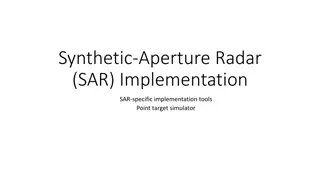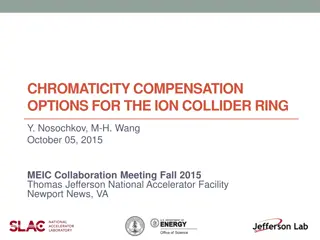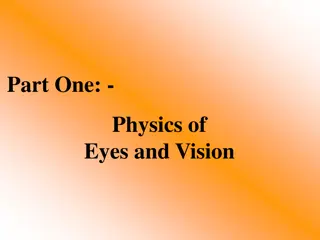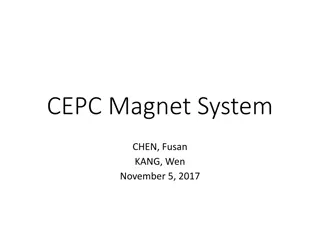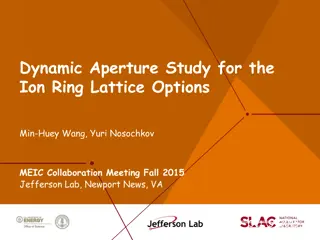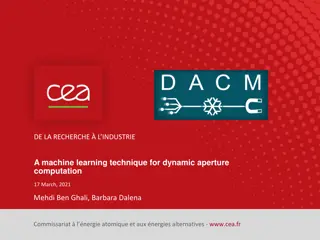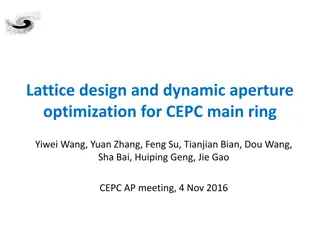
Dynamic Aperture Optimization with MOGA
"Learn about the dynamic aperture optimization of the CEPC booster using Multiobjective Genetic Algorithms (MOGA). Explore the application, algorithm, and results of the optimization process over 36 generations."
Download Presentation

Please find below an Image/Link to download the presentation.
The content on the website is provided AS IS for your information and personal use only. It may not be sold, licensed, or shared on other websites without obtaining consent from the author. If you encounter any issues during the download, it is possible that the publisher has removed the file from their server.
You are allowed to download the files provided on this website for personal or commercial use, subject to the condition that they are used lawfully. All files are the property of their respective owners.
The content on the website is provided AS IS for your information and personal use only. It may not be sold, licensed, or shared on other websites without obtaining consent from the author.
E N D
Presentation Transcript
Dynamic aperture optimization of CEPC booster using MOGA Y. Y. Wei
Introduction Multiobjective genetic algorithms (MOGA) were developed since 1970s. Evolved further in the 1990s with the addition of genetic algorithms. The first application to accelerator physics was about 2005. Allow to find globally optimal solutions when a large number of fit parameters is used.
Algorithm Optimize certain objectives while fulfilling certain constraints. Min/Max ?1? ,?2? , ,?? ? subject to x ??, ? 1: Initialize population (first generation, random) 2: repeat 3:select parents to generate children (crossover) 4: mutation (children) 5: evaluate (children) 6: merge (parents, children) 7: non-dominated sort (rank) 8: select half of (parents, children) 9: until reach a generation with the desired convergence to the PO set
Application to CEPC booster Linear lattice parameters are not varied. Lcell=70.8 m , x=128.2, y=128.3, (60,60) Fodo cell, For bypass lines 8 Families of sextupole strengths are selected as variables (4 families of SF, 4 families of SD, Non-interleaved) . 2 objectives f(1)= -DA_nom_area_p*MA f(2)= -DA_nom_area_n*MA 800 populations
Result of 22th generation 1 family of SF, and 1family of SD 1% p/p: DA 49.8mm*23.1mm -1% p/p: DA 49.8mm*43.3mm 5 family of SF, and 5 family of SD (optimized using MOGA) 1% p/p: DA 62.6mm*36.6mm -1% p/p: DA 56.2mm*43.3mm
MA after using MOGA MA before using MOGA
MA after using MOGA MA before using MOGA
Summary MOGA now seems working for the dynamic aperture optimization of CEPC booster. More generations need to be generated to obtain more optimal results.




